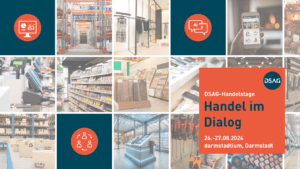In the search for a catchy description of a procurement process that is digitally integrated from start to finish, one term inevitably comes up: Purchase-to-Pay, often abbreviated as P2P. In this article, we present the key benefits of an integrated purchase-to-pay process and how to implement it.
What does Purchase-to-Pay mean?
Purchase-to-pay describes all process steps in procurement, from the notification of requirements through the ordering process to invoice verification and payment. In Germany, all or at least some of the processes within this process chain are still carried out manually. A Bitkom study on digitization confirms this: In four out of ten German companies, around 50 percent of business processes are paper-based.
What problems does purchase-to-pay solve?
Starting with the demand notification, the individual processes typically take place in numerous organizational units. Various people are involved in the process and require specific information for their daily work.
The goal of a purchase-to-pay strategy should be to optimize the procurement process holistically through smooth data exchange. In the process, the departments involved in purchasing face challenges. Let's take a closer look at the most important ones.
Long process cycle times:
In paper-based or manual processes, the runtimes of the overall process can be protracted. The reason for this is the many individual decisions along the procurement process. If one of them is delayed, this affects the subsequent processes. For example, requirement notifications remain unprocessed because they have simply been lost in some filing system.
Digital purchase-to-pay solutions, on the other hand, function like a digital brain. Thanks to intelligent workflows with escalation and reminder functions, all process participants are automatically reminded of their open tasks.
Media breaks between process steps:
E-mails, phone calls and - stone age, I hear you trapsen - faxes are still part of everyday life in many companies. Such media disruptions make procurement processes inefficient and thus more time-consuming = expensive than necessary.
Lack of process transparency:
Without digitization and automation of the individual process steps, purchasing organizations lose the overview more quickly. Too many people involved, a lack of deputy regulations and other disruptive factors make it impossible to retrieve status or control purchasing processes. Digital solutions create transparency and give purchasing and finance departments an overview of all incoming and outgoing amounts.
Discount advantages are lost:
Many suppliers grant special conditions and discounts for prompt payment. If the coordination between purchasing and finance departments does not work, such financial advantages are quickly lost.
No realistic liquidity planning:
For short-term liquidity planning, it is advantageous to plan for upcoming payments at an early stage in order to optimize cash flow. This can only work if the payment targets are already known at the time of ordering. In addition, real-time transparency and the linking of procurement and finance mean that monthly, quarterly and annual financial statements can be created, checked and completed more quickly in accounting.
What does a successful purchase-to-pay strategy look like?
 To clear up a common misunderstanding right away: "Digitizing" does not mean turning a manual/paper-based process 1:1 into a digital process. The integration of software solutions for automation offers the opportunity to rethink processes. To make them simpler and more goal-oriented. And to do research with those involved: Who needs what part of the information? Where can steps be saved because it is more economical to set conditions for automated processing?
To clear up a common misunderstanding right away: "Digitizing" does not mean turning a manual/paper-based process 1:1 into a digital process. The integration of software solutions for automation offers the opportunity to rethink processes. To make them simpler and more goal-oriented. And to do research with those involved: Who needs what part of the information? Where can steps be saved because it is more economical to set conditions for automated processing?
Check the communication between your company and your suppliers, starting with the order and order confirmation up to testing and approval processes. Critically question manual processes: Are there plausible reasons for e.g. approvals by 10 different people?
Manual processes are associated with a high expenditure of time and personnel as well as potential for errors. A purchase-to-pay process that is at least partially automated minimizes sources of error, increases transparency, and saves valuable time and money..
What is the best way to implement the digitization of P2P?
By calling us 🙂 We are experts in implementing digitization projects in SAP® for P2P and O2C processes and will be happy to explore with you which solution is most sustainable for you. Please feel free to contact us without obligation.



